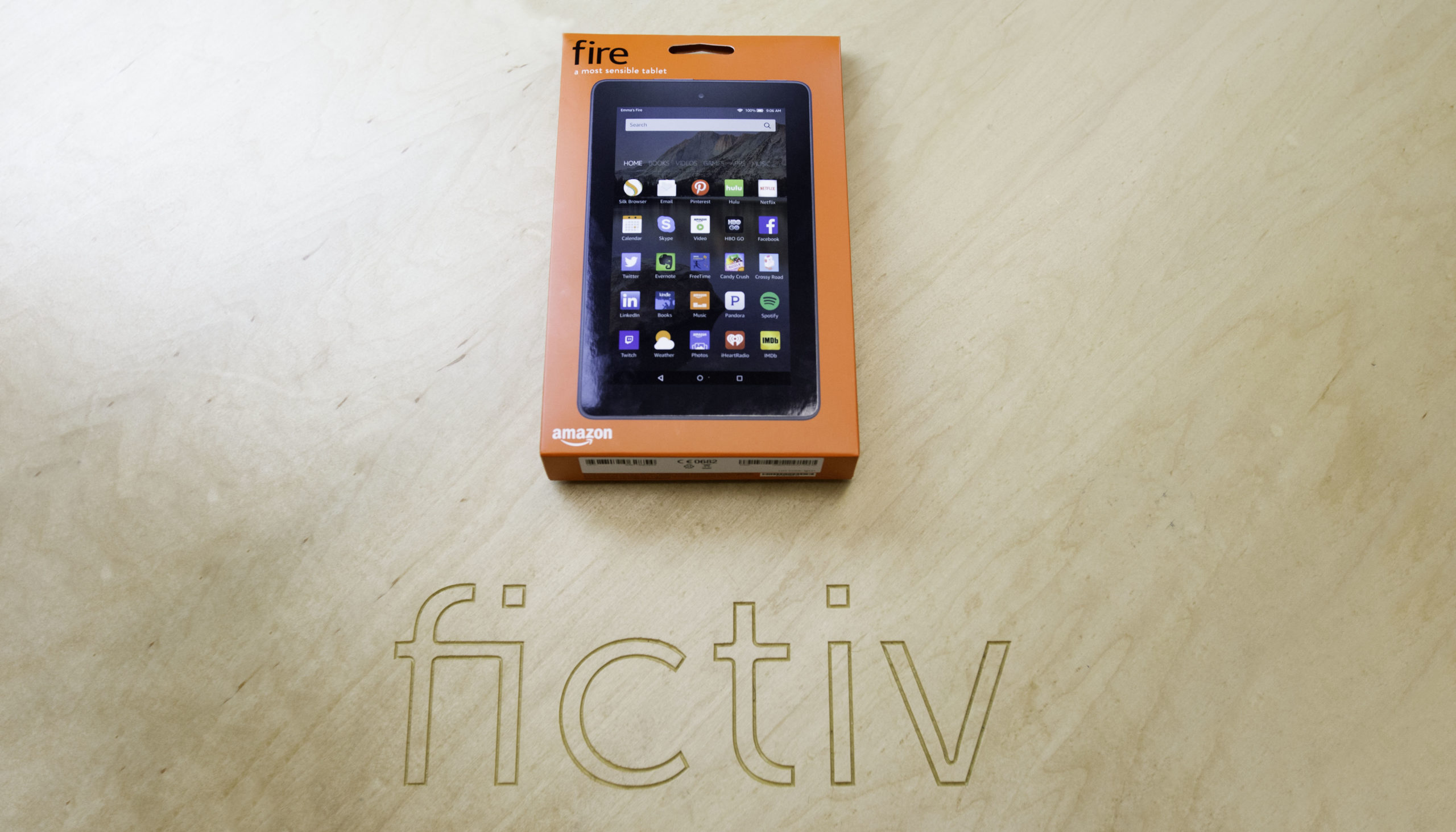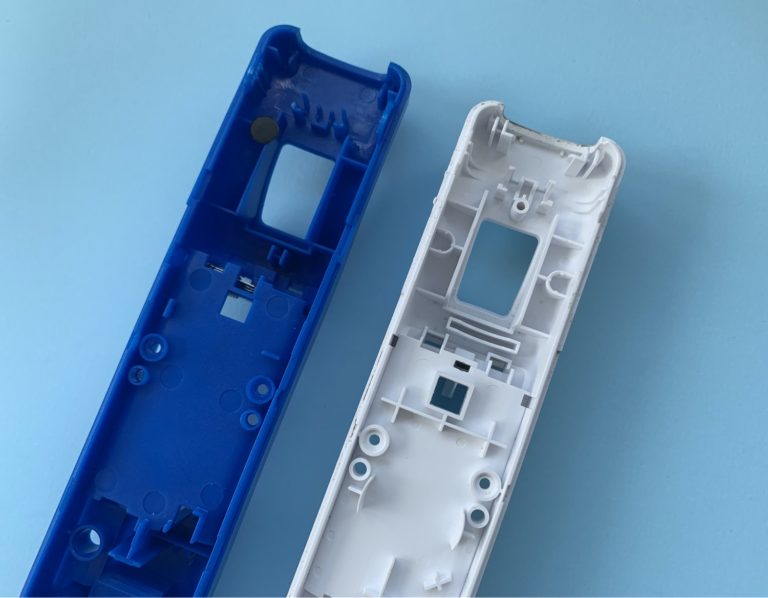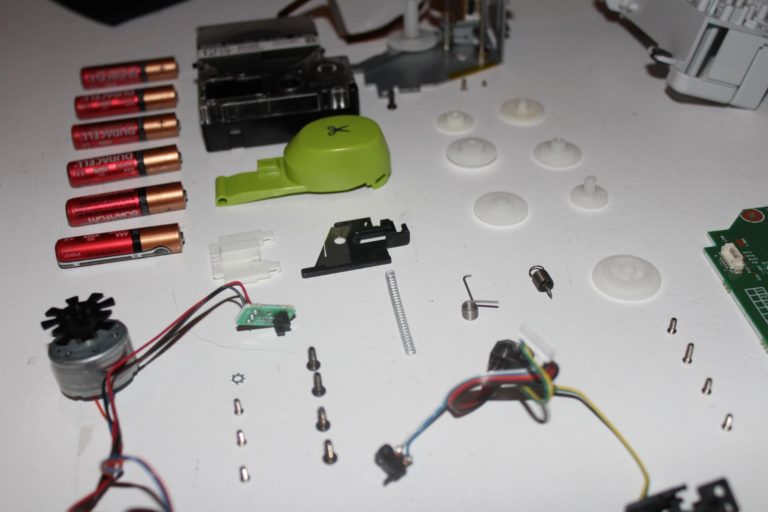
In the midst of your holiday shopping, you probably came across the new Amazon Kindle Fire that’s selling for $50.
$50!
That’s twice as cheap as any other tablet Amazon has on the market. For 50 bucks you get a 7” display, 1.3 GHz quad-core processor, Wi-Fi, 8 GB of storage, and rear and front-facing cameras. It’s not the fanciest tablet, but in Amazon’s own words, it’s “a most sensible tablet.”
Let’s take a look inside to see just how sensible this new tablet really is.
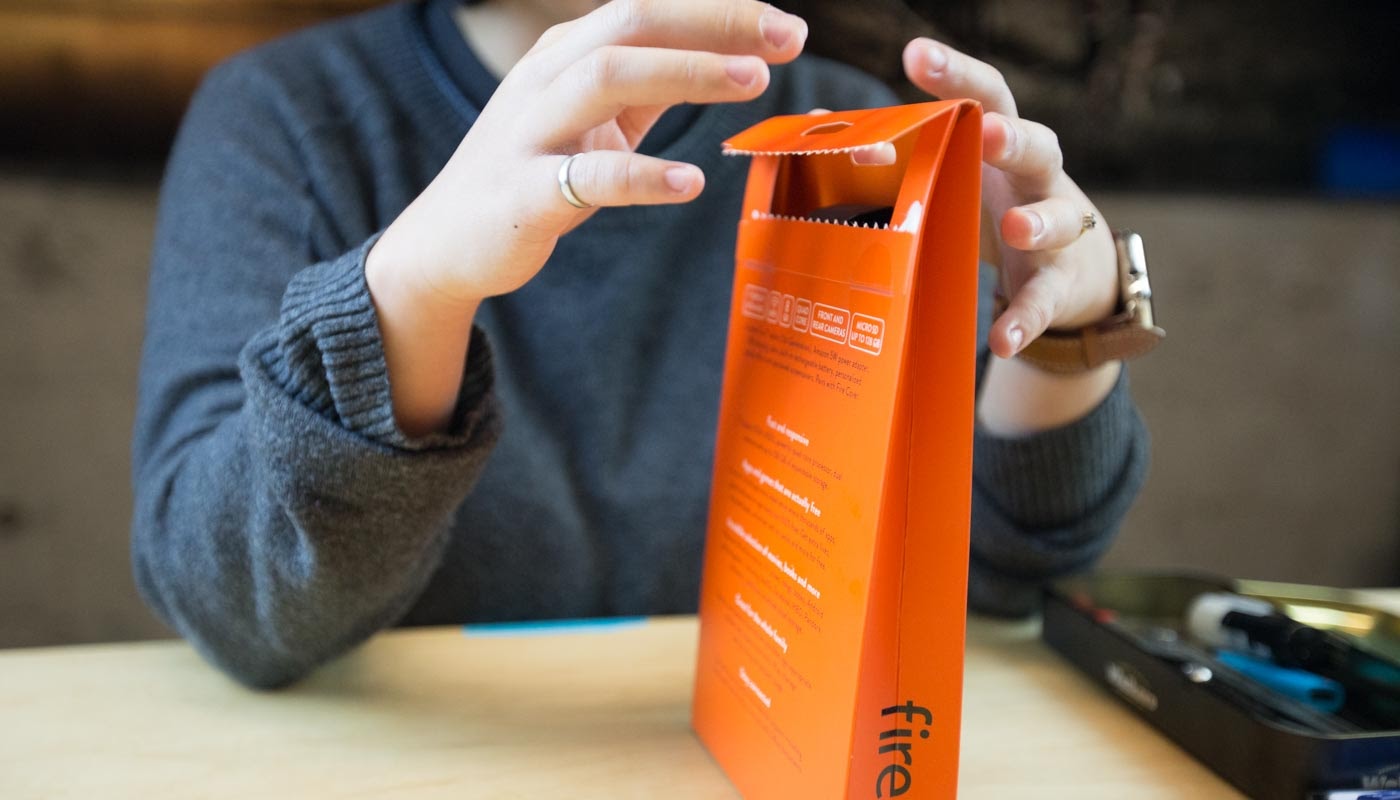
The packaging definitely get’s an A+ on the scale of sensibility. It’s very minimalist and efficient space-wise, in that it takes up very little retail space. It’s also highly flexible in a retail environment since it can hang or stand up.
Usually consumer electronics will be packaged with some sort of molded pulp tray, but here it’s just a piece of cardboard — a more environmentally friendly solution, and definitely cheaper than your average packaging.
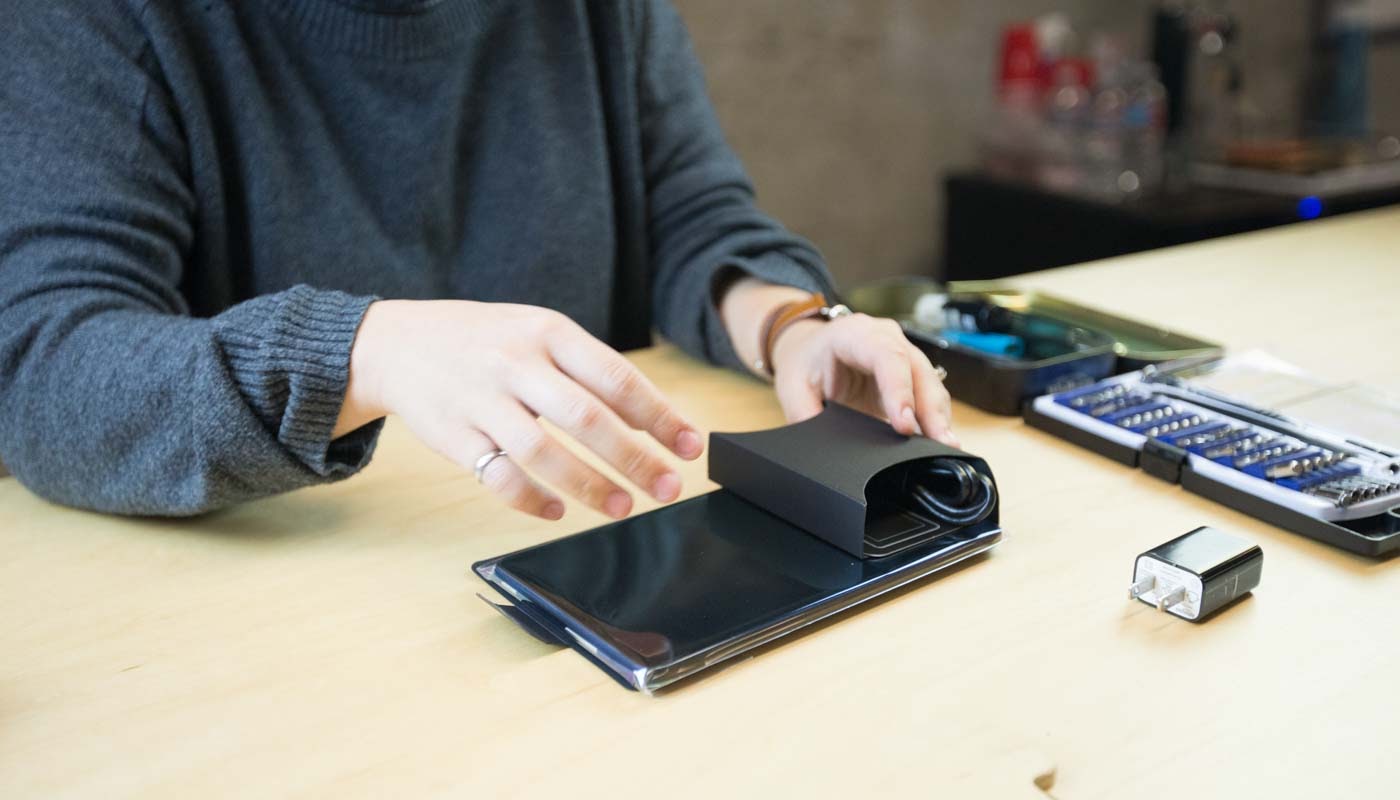
This is what comes out of the package — tidy and simple! It is slightly disconcerting that the tablet was rattling around inside without a ton of structure, but it does look nice. Is Amazon making a statement about the durability of the Fire tablet?

The kindle is super easy to open, kept together by a ton of snap fits.

The button mechanisms on the outside are really awesome. This is a co-molded piece, made of rigid PC-ABS plastic on the outside, with little arms made of an elastomer material on the inside, designed to keep the feature from falling out of place after installation. I love this mechanism and use it all the time.

Looking inside, the casing is a very simple plastic injection molded part, slightly textured and colored in-mold (vs. painted), using PC-ABS as the material.
The middle of the mold is actually carved out by CNC (computer numerical control) milling. This is the big mystery of today’s teardown. We’re not entirely sure why Amazon would CNC this middle part, but our theory is that there was some sort of modification done towards the end. Maybe the battery was replaced for a thicker battery, which messed up the product assembly. All we know is that a rework had to be done; this happens all the time.
On the right you can also see the gigantic battery, manufactured by Amperex Technology in Hong Kong.

Below the battery is a really cheap little speaker, directly soldered onto the main board. When you’re building a $50 tablet, even a single connector makes a difference in the BOM cost. Amazon doesn’t bother with the superfluous.

On the screen, we find a wide FPC (flexible printed circuit) ribbon that goes into a connector to the main board. There are so many pins on this thing!

On the other side of the casing we see a ton of ejector pin marks. Lots of ejector pins placed evenly ensures that the part doesn’t warp while being ejected from the mold. There are also a lot of ribs to add rigidity to the very thin back plate.

Under the shield we find the chips:
- Samsung KLM8G1GEND-B031 – data storage chip
- Mediatek ARM Mt8127A – SoC (system on chip)
- Mediatek MT6323LGA – integrated circuit
The main takeaway here is that this thing is designed to be cheap. It only has 5 screws, really low-cost chips, a super cheap speaker, and minimalist packaging. We’re estimating the BOM cost to be just a bit below its retail price of $50. Amazon is not making much profit here, in the hopes you’ll also purchase their digital content once you have the device.
So if you’re looking for something really basic and shall we say, sensible, this Kindle Fire has your name on it.
